Headlines
- Gentle Daily Ear Care with Medicare Ear Spray
- Breathe Easy with Medicare Nasal Spray
- Fleming Medical Renews Support for Irish Heart Foundation’s “Before Damage is Done” Campaign with over €25K Donation
- First Response for Minor Burns: Why MD508 Medicare Burn Spray Belongs in Every Medicine Cabinet
- Step Smart: Introducing the New Medicare® Footcare Range
Footcare: Blisters & Hydrocolloid Technology
30 April 2021

Blisters are one of the most common footcare issues out there and one of the most irritating. As common as they are, there tends to be a lot of misinformation and misconceptions about blisters and how to treat them. Because of this, we have compiled a list of common questions that people have around blisters, their causes, treatment and prevention. When it comes to treating blisters, we will be highlighting the benefits of using Hydrocolloid Technology.
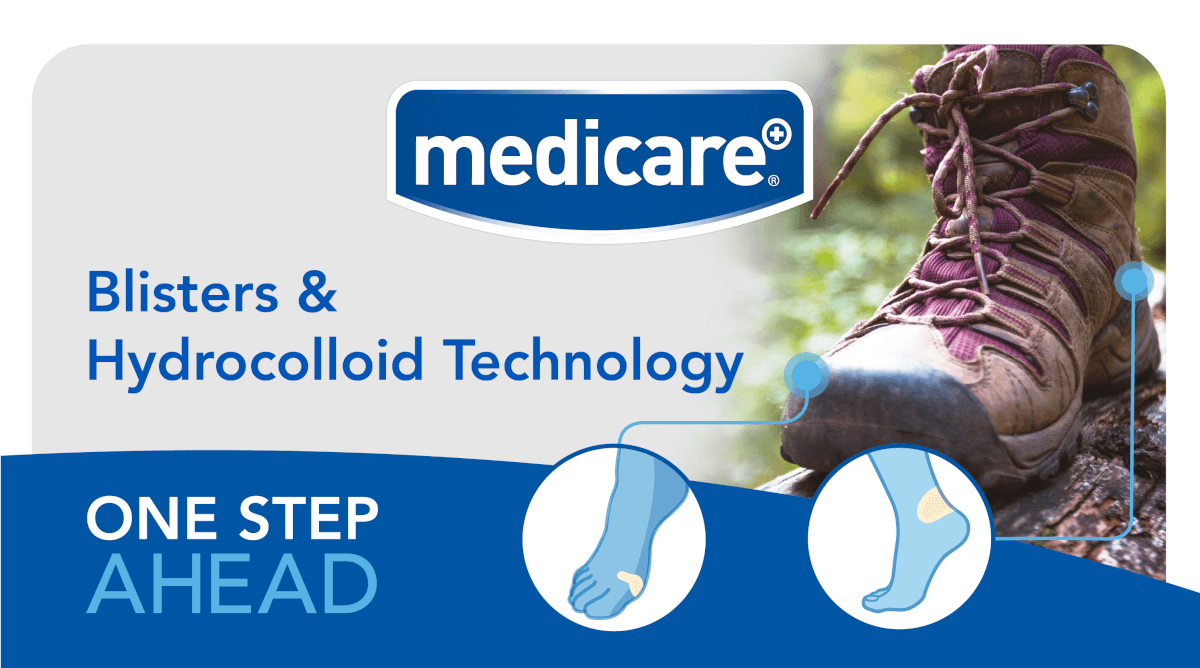
- What are blisters?
- What causes blisters?
- The 5 Stages of Blisters
- How can I treat a blister?
- What is Hydrocolloid Technology?
- Should I pop my blister
- How can I prevent blisters?
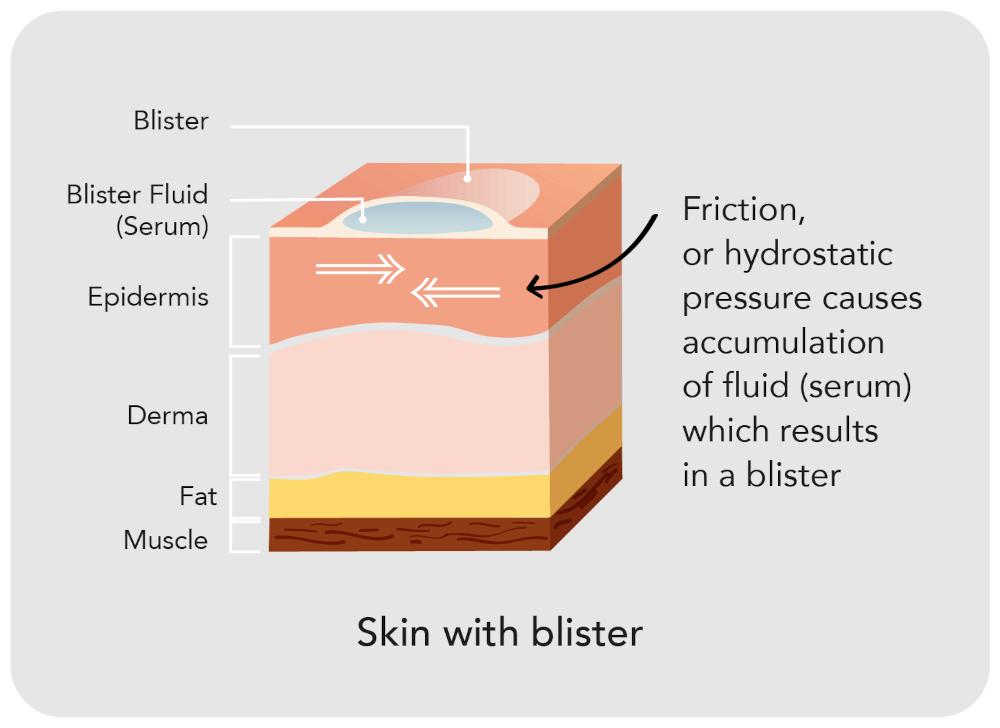
What are blisters?
Blisters are little bubbles of fluid that collect under the skin to form a raised skin growth. Vesicles are the more common, smaller blisters which are filled with “serum”, which is clear, watery fluid. If blisters remain unopened, the serum can provide natural protection for the skin beneath it, which is why it is not advised to pop blisters as the wound is more vulnerable to infection.What causes blisters on your feet?
Friction blisters result from mechanical separation of the epidermal cells, followed by accumulation of fluid in the separation due to hydrostatic pressure. Blisters on feet are usually brought about due to friction, rubbing or from tight or loose shoes. They can also be brought about by prolonged, unusual exercise or exertion, for example, if you haven’t run in a while and then take on a long-distance jog, the skin on your feet is not used to the friction and will blister.The 5 Stages of Blisters
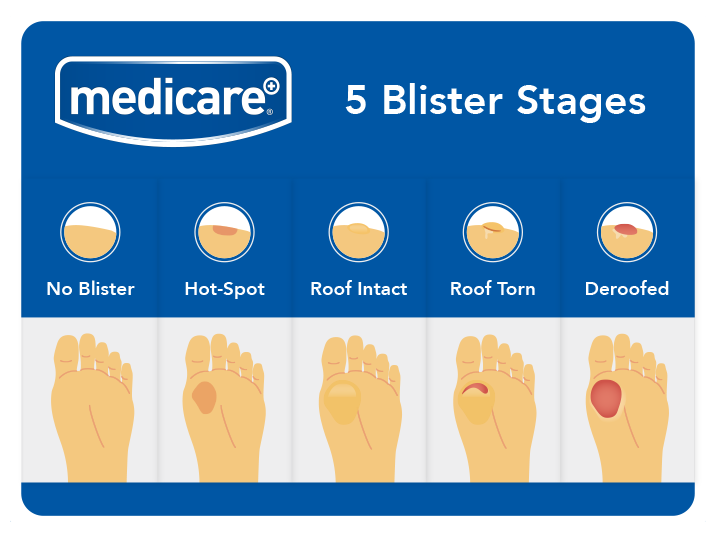
How can I treat a blister?
When you feel a blister forming or are used to getting blisters in a particular area (like in stage 1 or 2), you can prevent them by covering the blister hotspot with a plaster. When a blister forms, like in stage 3, you can use plasters to prevent the skin from opening. It is important to keep this skin intact as it prevents the vulnerable, sensitive skin underneath the fluid from getting infected. If the skin on the blister has broken or popped, like in stage 4 or 5, make sure to use a Clean, Apply, Cover methodology when treating the affected area. Clean the wound of dirt and bacteria, Apply an antiseptic wipe or spray, and Cover with a plaster or dressing. If there is still skin on the blister, don’t tear it off, keep it intact as it will still help to protect the raw skin underneath. To learn about this in detail, read our blog post on home woundcare. Hydrocolloid plasters are the most suited plaster for blisters as they help to heal the blister quicker than a normal plaster.What are Hydrocolloid Plasters? How do they help blisters?
Hydrocolloid Technology promotes moist wound healing which contributes to the optimum healing conditions for wounds and a variety of footcare ailments such as blisters, corns and callouses. They are moisture-retentive and hydrophilic when means they attract and adsorb moisture and exudate from the wound to form a protective second skin to instantly relieve pain and protects against further damage. The Medicare Hydrocolloid Blister plaster range protects against bacteria, dirt and water which decreases the chances of infection and encourages faster healing as it is protected and cushioned from further friction and irritation.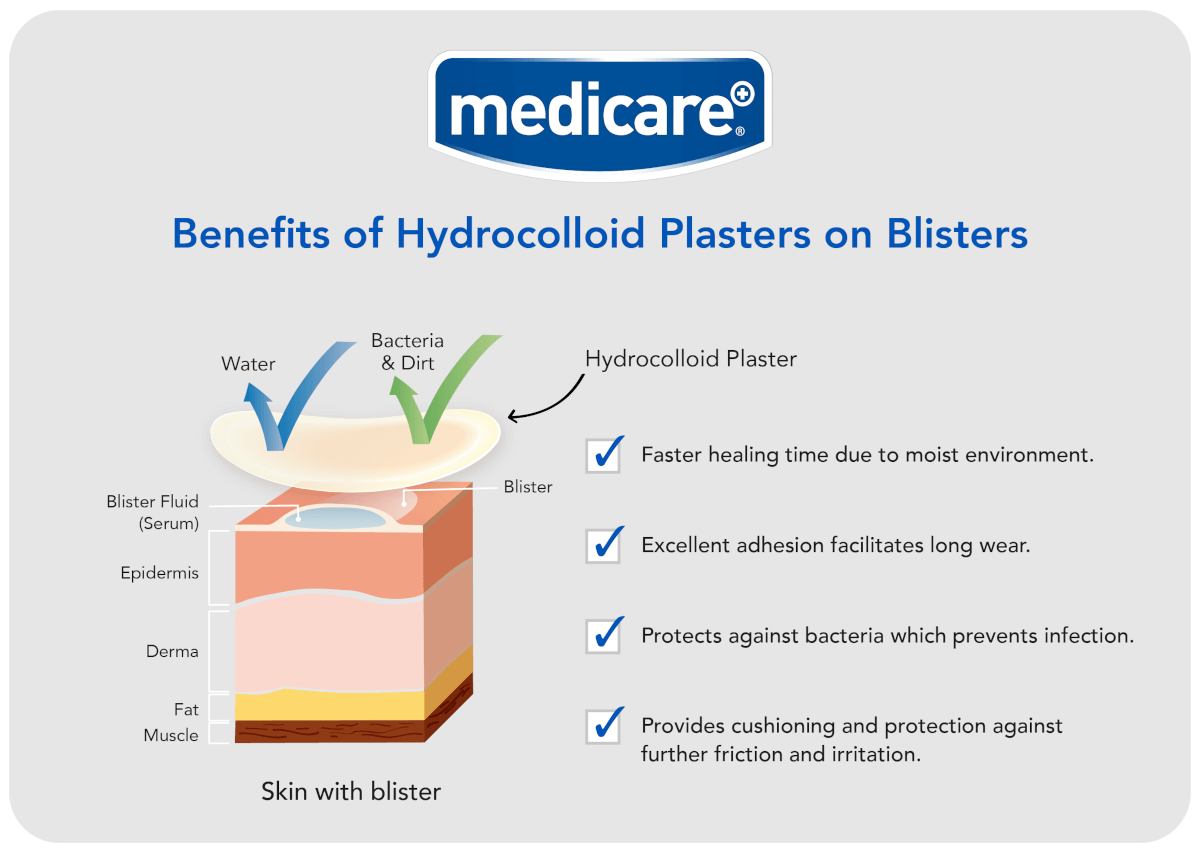
Should I pop my blister?
It is recommended not to pop your blisters. Popping them then “leaving the air at it” to heal is a myth. If the roof of the blister is torn or removed completely and the skin underneath is exposed, you should clean the area and cover it with a hydrocolloid blister plaster to prevent infection and help with pain relief. Treat it as an open wound that needs to be cleaned then covered. For tips on the best way to do this, read our recent blog post on home woundcare. However, if you have a blister that is extremely large, uncomfortable and painful, you can drain it by sterilising a sharp needle. Make sure to wear gloves, sanitise the blister before and after and cover with a hydrocolloid blister plaster to protect it from infection but avoid doing this if you can.How can I prevent blisters?
Ensure that you are wearing comfortable, correctly fitted shoes. If you will be walking for a long period of time, make sure to wear thick socks to prevent your shoes rubbing against your feet. You can wear the Medicare Hydrocolloid Blister range to actively prevent blisters if you are prone and know where they form.Related Products:
Medicare Hydrocolloid Blister PlastersMedicare Extreme Blister Cushions
Medicare Hydrocolloid Assorted Blister Plasters
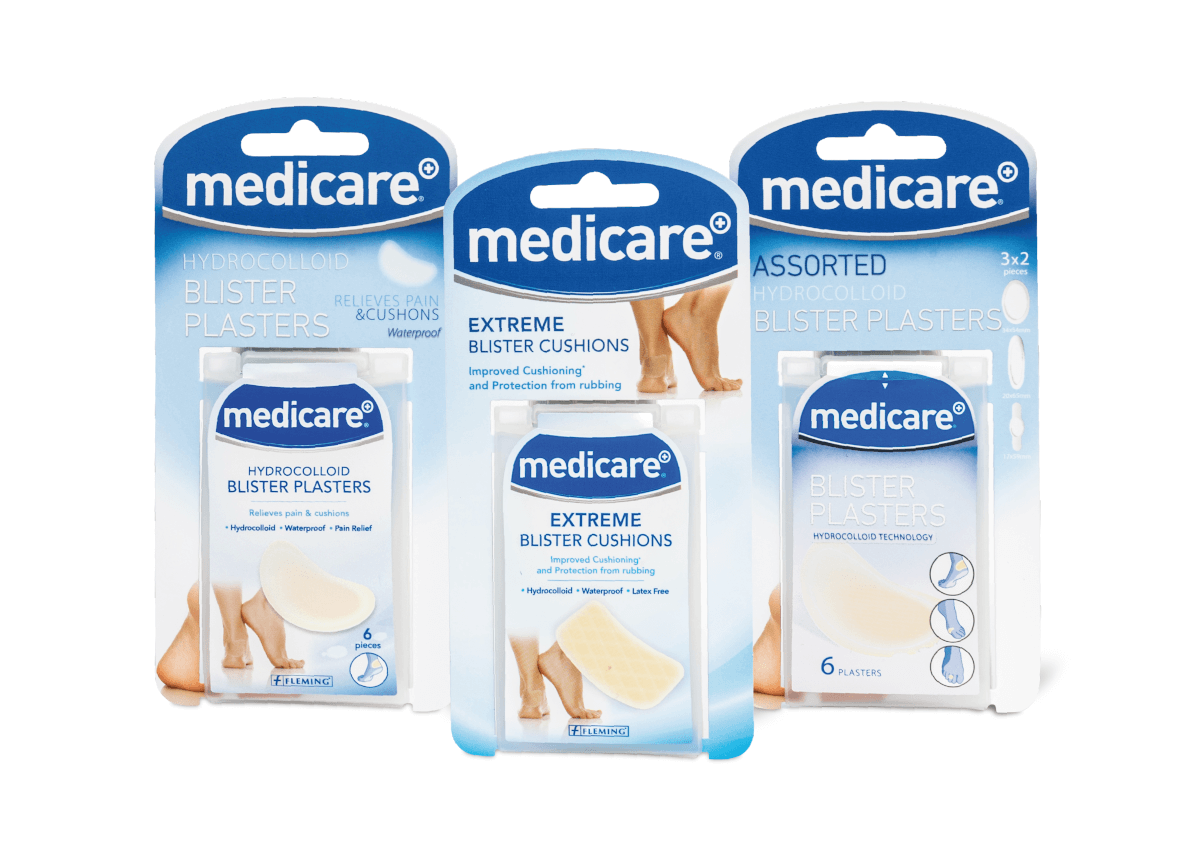
Explore the full and extensive Medicare Footcare range here. To see if the Medicare Footcare product range is in your local pharmacy, please visit the stockist map.

 Fleming Medical UK
Fleming Medical UK
